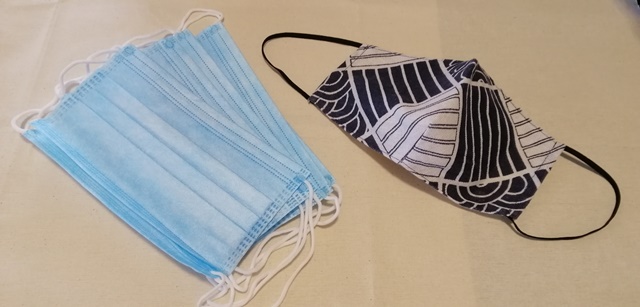The COVID-19 pandemic has affected people globally and Sarawak is no exception in experiencing the impact of this epidemic.
In 2020, the national Gross Domestic Product (GDP) experienced a reduction of RM80.4 billion as compared to 2019. The national economic performance contracted 5.6 per cent as compared to 4.4 per cent in the preceding year.
Sarawak’s GDP in 2020 is also experiencing a decline, recorded to be at 7.1 per cent, compared to 2.8 per cent in 2019.
However, Sarawak is among the six states (Selangor, Kuala Lumpur, Johor, Penang and Sabah) to have remained as the largest contributors to the national GDP with a total contribution of 72.1 per cent (Sarawak contraction RM9.6 billion), despite having suffered contractions last year.
According to the State Socioeconomic Report 2020, Sarawak recorded value added of RM127.1 billion compared to RM136.8 billion in 2019.
The contraction of 5.6 per cent in the services sector (2019: 5.3 per cent) was influenced by the wholesale & retail trade, accommodation and food & beverage (9.2 percent, 2019: 6.5 percent), as well as utilities and transportation & storage sub sectors.
At the same time, manufacturing sector contracted 8.6 per cent (2019: 2.9 per cent) contributed by the negative performance of refined petroleum, chemical, rubber and plastic products (-8.9 per cent 2019: 3.0 per cent) and the decline in vegetable and animal oils and fats, as well as wood products.

Meanwhile, mining and quarrying sector also recorded a decline of 5.9 per cent (2019: 1.3 per cent) due to a shortfall in crude oil production.
The agriculture sector reduced to 10.0 per cent due to the contraction in the production of oil palm and other crops, as well as the forestry and logging sub sector.

The services (36.2 per cent), manufacturing (26.3 per cent) and mining and quarrying sectors (22.2 per cent) remain the main contributors to the Sarawak economy.
The agriculture sector contributed 11.7 per cent while 3.2 per cent is contributed by the construction sector.
The services sector, recorded a value added of RM46.0 billion in 2020 compared to RM48.8 billion in 2019.
The growth of this sector declined by 5.6 per cent compared to a positive growth of 5.3 per cent in the previous year.
The decline in this sector was influenced by the decline in the wholesale and retail trade sub -sector and the food & beverage and accommodation sub -sector.
In addition, the transport and storage sub -sector as well as the real estate and business services sub -sector also contributed to the decline in the services sector in Sarawak.
Meanwhile, the manufacturing sector in Sarawak recorded a value added of RM33.5 billion (2019: RM36.6 billion).
The decline in this sector to a negative 8.6 per cent from 2.9 per cent in 2019 influenced by the petroleum, chemical, rubber and plastic products group which dominated the sector with a contribution of 79.2 per cent.
The group declined 8.9 per cent from 3.0 per cent in the previous year influenced by the decline in the refined petroleum products and chemicals, chemical products & pharmaceutical products sub -sector.
In the State Socioeconomic Report 2020, it was stated that while this sector recorded a decline, there were 24 manufacturing projects approved during 2020 with a total investment capital of RM15.7 billion involving RM0.5 billion domestic investment and RM15.3 billion foreign investment (MIDA, 2020).
As one of the oil and gas producing states in Malaysia, the mining and quarrying sector also contributes significantly to Sarawak’s economy.
However, in 2020 the sector contracted 5.9 per cent (2019: 1.3 per cent) influenced by the fall in crude petroleum and natural gas production.
At the same time, the agriculture sector is experiencing decline of 10.0 per cent due to the decline in the crops and forestry and logging sub -sectors. The sector recorded a value added of RM14.9 billion (2019: RM16.6 billion).
The forestry and logging sub -sector contributed 9.2 per cent to Sarawak’s agriculture sector and recorded a drop of 41.0 per cent compared to a decline of 14.2 per cent in 2019.

The value of construction work in Sarawak also recorded a decline and affected the performance of the construction sector by registering a fall of 8.8 percent (2019: 1.7 per cent).
Despite that, the information and communication sector benefitted from the implementation of the MCO to curb the spread of COVID-19.

This sub-sector has contributed 7.7 per cent to the Sarawak service sector with the value added of RM3.5 billion in 2020 (a growth of 7.9 per cent compared to 7.3 per cent in 2019).
The implementation of MCO has led to an increase in demand in data communication services through Home Learning and teaching, Work from Home, online meetings and e-commerce services involving online platforms such as MySejahtera application, internet banking, food delivery application, WhatsApp, Facebook and Youtube.

The Post COVID-19 Development Strategy 2030 (PCDS 2030) was launched on 22 July 2021 to accelerate the economic growth to achieve a developed state status by 2030. Hence, to achieve this target Sarawak needs to double the size of the economy from RM136 billion in 2019 to RM282 billion in 2030 by growing on average of 8.0 per cent per annum until 2030.






